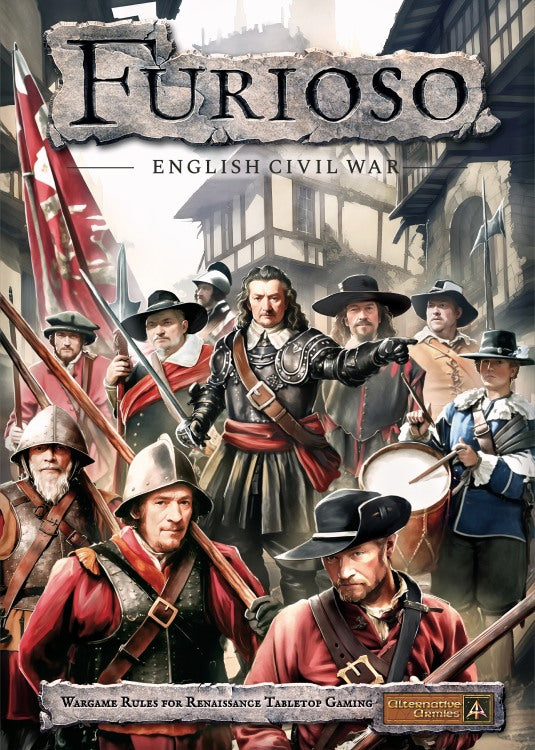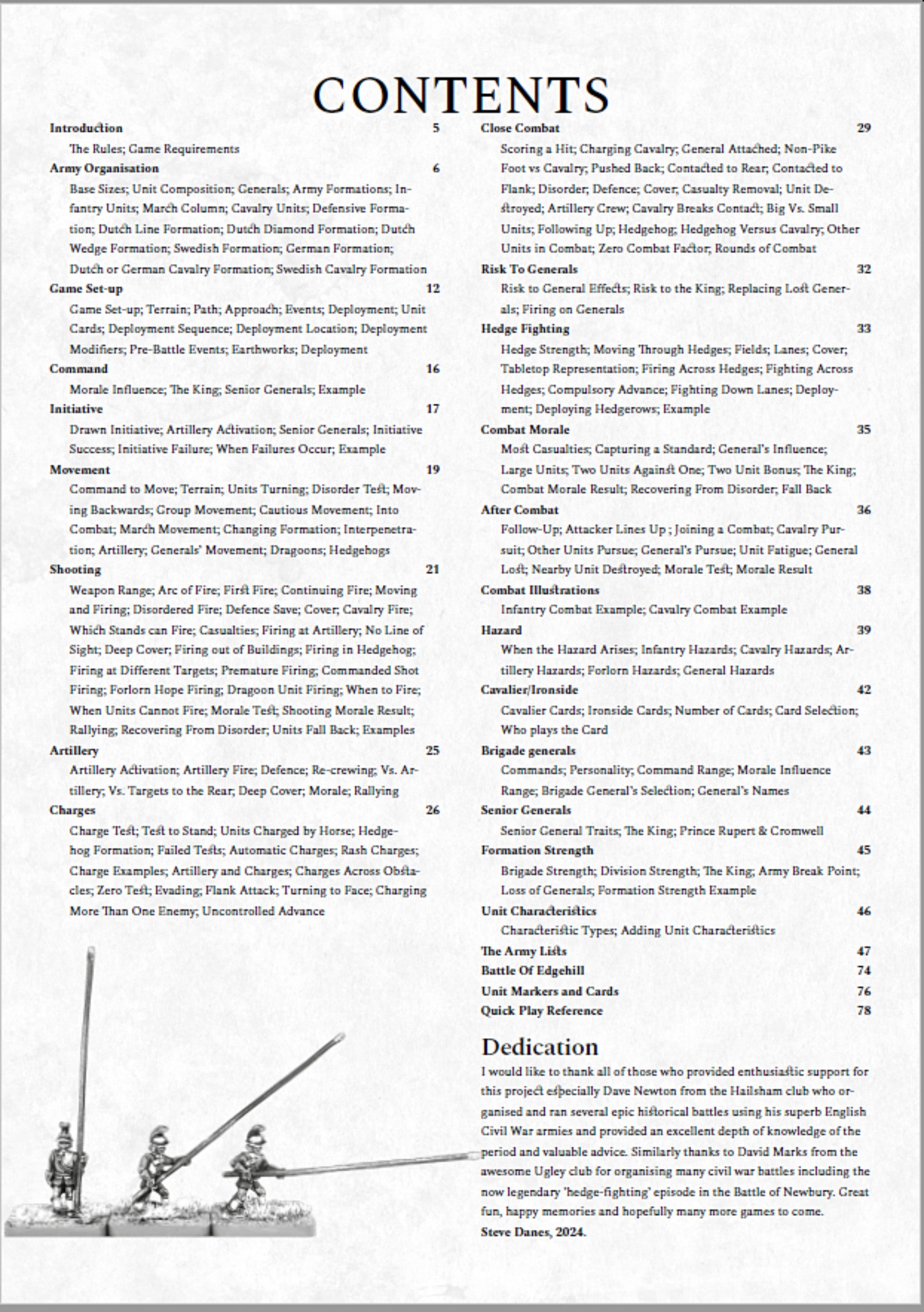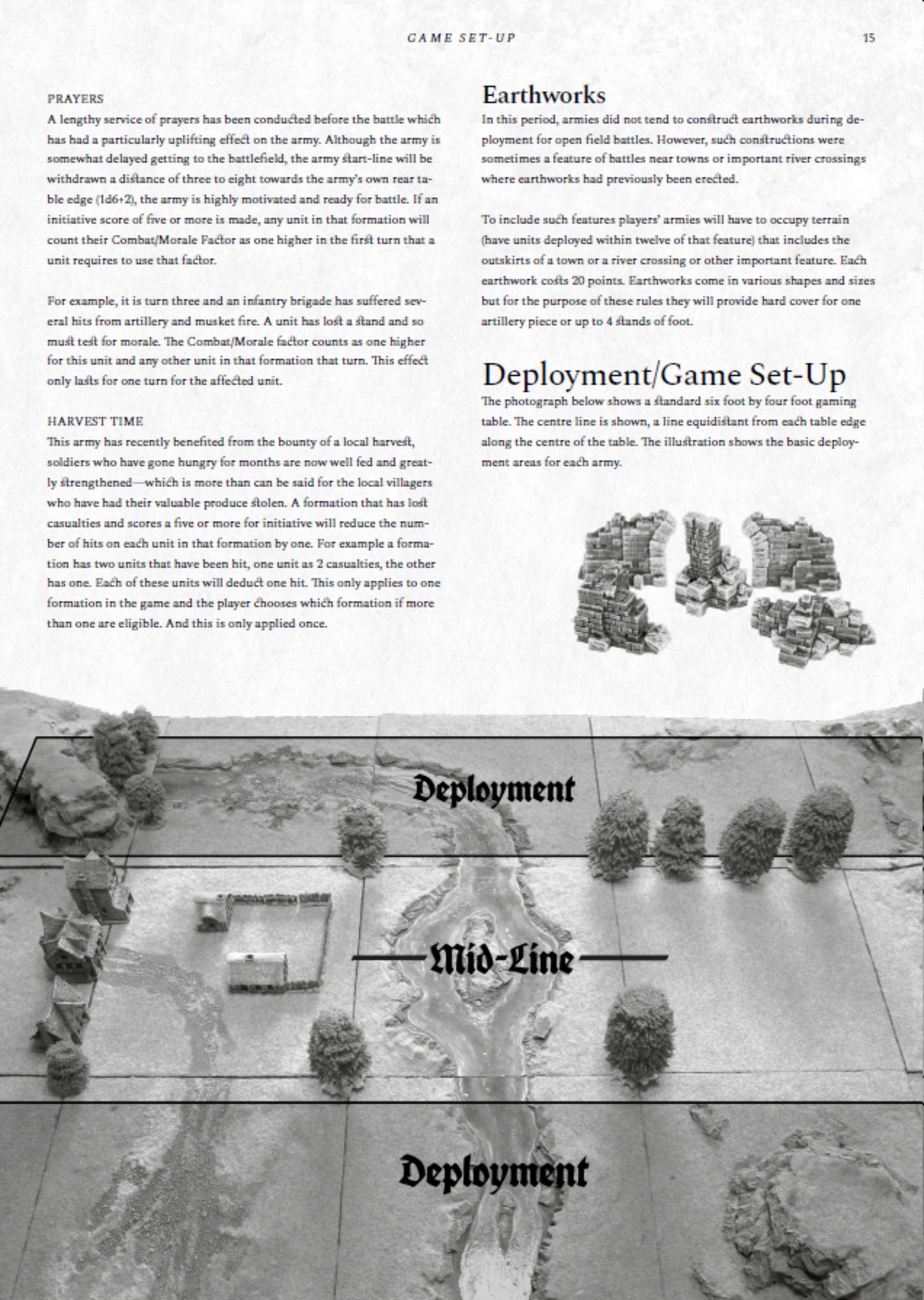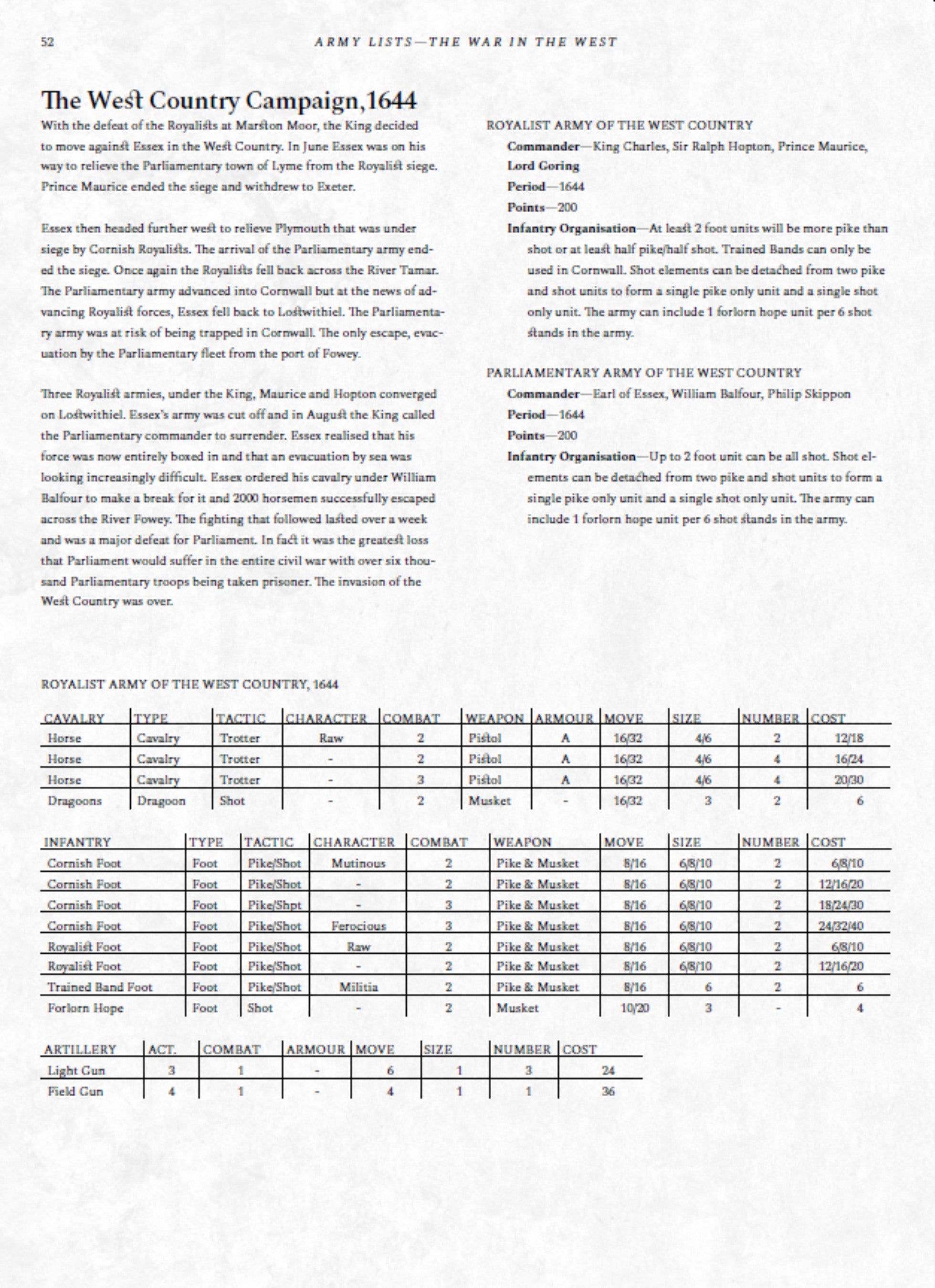Description
RULEBOOK
Furioso The English Civil War is a set of wargames rules that covers tabletop warfare in Britain during the civil wars of the seventeenth century. The rules allow players to fight large scale land battles with a simple to use and enjoyable gaming system. A period which saw the country torn apart and reformed as well as the death of a king and the rise of Parliament.
Author: Steve Danes.
A4 Format, Staple Bound (80 pages)
Colour Covers, ISBN and Barcode
Click images on this page to see the Contents plus an example Army List.
Recreate large scale battles such as those fought at Edgehill, Newbury, Marston Moor, Naseby, Dunbar and Worcester to name but a few! Within these pages players will have to deal considerations of higher level command, where to apply the pressure, when to deploy reserves and...just where have all my cavaliers just ridden off to? Players will find themselves in control of usually enthusiastic (and sometimes far too enthusiastic) troops who unfortunately do not have the training or experience of their European colleagues. Players will also be able to note the way that armies changed through the period, some becoming worse and some becoming better and leading ultimately to the creation and success of the New Model Army.
Furioso can be fought using any scale figures such as 15mm and 28mm.
The Furioso rules have a very simple system at their heart. If you want to do anything you need to roll a d6 (six sided dice), a score of five or more will achieve success, a score of four or lower means failure. Modifiers are applied but this is to the number of dice rolled to achieve success and not the score required. Success will therefore be measured by the number of successful scores achieved. At the start of a turn, players roll Initiative for each brigade. Brigades will be activated in sequence with the highest scoring brigade going first followed by lower scoring brigades. Brigades that score a ‘one’ might find themselves doing things that they don’t necessarily want to! This means that play will pass from brigade to brigade rather than one side activating all of their forces and then the opposing side activating all of theirs. The result of this kind of mechanic means that players will not have complete control over their force and may at times find it difficult to execute their plans for the battle. But never fear, this applies to the other side as well and makes for a more ‘real experience’.
Included in the book are a series of random events or Hazards that cover such situations as troops running low on ammunition, friendly fire, artillery powder explosions and a whole host of other misfortunes that commonly befell armies of the English Civil War.
To the rear of the book are extensive army lists that break down into each campaign (the West Country, the North and so forth) and by year so that players can command a West Country Royalist army in 1643 or a Parliamentary army in the North in 1644.
Also included in this book are unit cards for all of these units. These will be used during the deployment phase of the battle so that opposing armies will have only a limited idea of their opponents composition and dispositions at the start of the battle.





